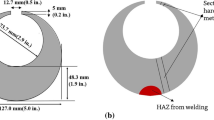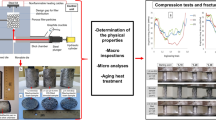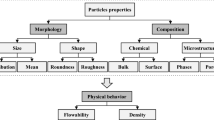Abstract
Some of the advantages inherent in the vacuum casting technique such as improved mechanical properties and elimination of shrinkage have been replicated in a low-cost design. Melting and vacuum requirements of the equipment were determined based on a furnace capacity of 15 kg of aluminium. Clay-based refractory and insulating bricks were used for furnace construction. The vacuum system was made from locally available materials and designed for efficiency required for vacuum casting. The equipment was used to melt and cast small-sized specimens using the lost-wax technique and compared with green sand and ceramic mould cast specimens. Tensile and shrinkage tests were carried out on all specimens. The results of the tensile tests were 123, 98 and 113 MPa for the vacuum cast, green sand cast and ceramic mould cast specimens, respectively. Furthermore, shrinkage defect which is common to both green sand and ceramic mould casting was eliminated in vacuum casting. The vacuum casting equipment cost an equivalent of about U.S $1000.00 (One thousand dollars) to construct and can be easily scaled-up for large-sized castings by increasing furnace capacity and the size of the moulding flask.
Similar content being viewed by others
References
What’s the Best Way to Fill the Mould?, in Metal Casting Technology Centre (MCTC) Newsletter, Alabama: University of Alabama, 1995, vol. 10, no. 1.
Kaufman, J.G. and Rooy, E.L., Aluminum Alloy Castings: Properties, Processes, and Applications, Ohio: ASM International, 2004, pp. 47–54.
Pavlak, L., Effect of Filling Conditions on the Quality of Cast Aluminium Cylinder Heads, J. Metallurgy, 2008, vol. 14, pp. 31–39.
Jolly, M., Casting Processes and Simulation Tools, in Automotive Engineering, Cantor, B., Grant, P., and Johnston, C., Eds., CRC Press, 2008, pp. 209–241.
Druschitz, A.P. and Fitzgerald, D.C., Lightweight Iron and Steel Castings for Automotive Applications (Society of Automobile Engineers), SAE Tech Paper, 2000, 2000-01-0679.
Vender Jagt, D.A. and Tooley, G.A., Two-Chamber Furnace for Countergravity Casting, US Patent 5948352, 1999, http://www.patentstorm.us/patents/005948352.pdf (2008).
Kuhn, J.W. and Wylie, R.J., Apparatus for the Countergravity Casting of Metals, US Patent 5178203, 1993, http://www.freepatentsonline.com/5178203.html (2008).
Vacuum Cast Impellers, in Aurora Metals, http://www.aurorametals.com/vc.htm (2008).
Hoskyns, C., ZVAC Beats All Old Vacuum Die Casting Methods, 2007; http://www.zvac.co.uk/Vacuum-Diecasting-Techniques.html, 2008.
Moraru, L., The Melting Temperature of 99.97 wt % Al Estimated from Activation Energy for Viscous Flow, Czechoslovak J. Phys., 2003, vol. 53,no. 5, pp. 439–446.
Brandt, J.L., Properties of Pure Aluminium, in Aluminium, Hatch, J.E., Ed., Ohio: ASM International, 1984, pp. 1–24.
Smithells, C.J. and Brandes, E.A., Eds., Metals Reference Book, 5th Ed., Boston: Butterworths, 1976, p. 944.
Tims, M.L. and Diao, Q., Sand Casting, in Modeling for Casting and Solidification Processing, Kuang-Oscar, Y., Ed., CRC Press, 2001, pp. 291–317.
Rosso, M., Modelling Casting, in Handbook of Thermal Process Modelling of Steels, Gur, C.H. and Pan, J., Eds., CRC Press, 2008, pp. 265–313.
Chastain, S., Metal Casting: A Sand Casting Manual for the Small Foundry, Florida: Stephen Chastain Publishing Co., 2004, vol. 2, pp. 99–111.
American Society for Metals, in ASM Handbook, 10th Ed., Ohio: ASM International, 1990, pp. 210–339.
Author information
Authors and Affiliations
Corresponding author
Additional information
The article is published in the original.
About this article
Cite this article
Aremo, B., Adeoye, M.O. A low-cost vacuum casting equipment for aluminium alloys. Russ. J. Non-ferrous Metals 51, 124–130 (2010). https://doi.org/10.3103/S1067821210020094
Published:
Issue Date:
DOI: https://doi.org/10.3103/S1067821210020094




